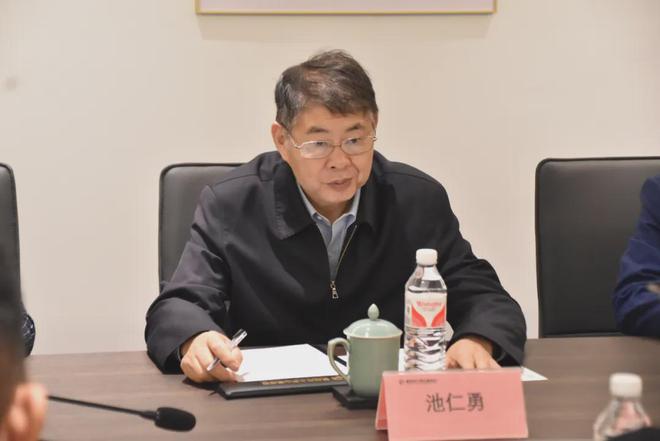汕头城市发展的空间形态与进程:1860-1949
随着《天津条约》的签订,汕头于1860年正式开放为通商口岸,开始成为沟通海内外与整个韩江流域的枢纽港,并在随后的几十年间迅速发展,成为繁华的现代化都市。汕头开埠以后,西方列强相继到来,中国本土的商民也开始在此加强自己的势力。由于没有设立租界,汕头仍处在中国地方官的管治之下。面对发展贸易的空间需求,一些有资本的外国人开始在汕头谋求土地,而本土地方大族和商人则凭借传统买卖机制开发土地。他们运用各自的力量和手段,在汕头进行权力和利益上的较量,不断地“向海争地”。这一复杂的土地开发活动,促成街市、码头和商埠空间的拓展,并在没有总体规划的情况下形成了扇形的空间形态,为民国时期的城市改造和空间格局演变奠定了基础。
汕头在贸易、商业等多方面的发展,以及由此带来的优势,使其政治地位相应得到提升。1921年,汕头仿照广州成例设立市政厅,成为正式的建制市,并逐步实现从“无市政”到“有市政”的转变。市政当局不仅逐步践行“专家治市”的理念,同时也设立专门的职能部门,颁布地方性法规,使市政管理进一步专业化、科学化和法制化。汕头城市空间的变迁和发展由此受到市政当局的约束和管控。
在近代市政改良之风的持续影响下,汕头市政厅设立之初,便效法欧美改良市政,其中与城市空间相关的举措包括拆辟马路、管理建筑,等等,同时也包括筹划中的城市规划。1922年的“八二风灾”使汕头受到重创,市政工作陷入停滞。在随后的恢复中,市政当局接续原先筹划,对全市进行总体规划,其中最重要的是运用现代规划理念设计了汕头的城区路网,并规定了道路的等级及宽度。此项计划上呈省政府后因广东省政局不稳而中辍,直至1926年前后由市政当局重新推动并稍作修订后方获准施行,其后汕头的城市改造便在此项计划之下逐步实施,并形成了具有现代性特征的城市空间形态。在此过程中,虽然市政当局具有主导地位,但活跃于汕头的各地人士发挥了关键作用。他们基于各自对城市化和现代化的理解和认识,在复杂的制度背景和社会经济环境之下,利用相应的话语参与市政并进行协作。
随着城市的规划和改造次第展开,汕头城市建设快速发展,不仅人口急剧增长并复杂化,商业也日趋繁盛和多元化。在汕头的各行各业中,汇兑庄、侨批业、轮船行、出口商等大行业,对城市空间的发展和演变产生了重要影响。这些控制或拥有大量资本的行业所带动的资金流转和各地人群的商业活动,尤其是金融行业和房地产投资,直接作用于城市空间的生产和改造。由此,汕头市政时期的空间形态及其城市样貌,深受其外部金融、人群和商业网络的影响,城市的商业分布、地产分布,人群构成和城市景观,都凸显了其位于南中国海的枢纽港所具有的时空特质。
关键词:城市;汕头;空间形态;城市规划
Abstract
Following the signing of the Treaty of Tianjin,Shantou was officially opened as a commercial port in 1860 and began to serve as a hub port linking China(particulary the entire Han River basin)with the outside world,and developed rapidly into a prosperous and modern city in the following decades.After Shantou's opening,the Western powers arrived and local Chinese merchants began to consolidate their position in the city.Given the absence of foreign concessions,Shantou remained under the rule of Chinese officials.Faced with the need for space to develop trade,some foreigners with capital began to seek land in Shantou,while the local clans and merchants developed land through the traditional trading mechanism.They used their own power and means to compete for power and interests in Shantou,reclaiming land from the sea unceasingly.This complex land development led to the expansion of markets,wharves,and commercial ports,as well as the spontaneous formation of a fan-shaped spatial form without overall planning,which laid the foundation for urban transformation and spatial form evolution of the Republican period.
Shantou's development in various areas including trade and commerce,as well as its concomitant advantages,led to a corresponding boost in her political status.Following Guangzhou's lead,Shantou established a municipal administration bureau in 1921 and officially became an incorporated municipality,while gradually building her municipal administration apparatus.Not only did the municipal authorities gradually put into practice the concept of“experts ruling the city,”they also established special functional departments and promulgated local laws and regulations to further professionalize,scientificize and legalize municipal management.The changes and development of urban space in Shantou are thus regulated and controlled by the municipal authorities.
Shantou's municipal administration bureau was established under the continuing influence of modern municipal improvement,which included the demolition of roads and the management of buildings,as well as the planning of urban space,following the example of Europe and the United States.Shantou was badly hit by the typhoon of 2 August 1922,causing the municipal administration to come to a standstill.During the reconstruction which followed,the municipal authorities resumed their original agenda and drafted a master plan for Shantou.The key components of the master plan involved the designing of Shantou's urban road network with modern planning concepts,and the specifying of the grades and widths of roads.The plan was submitted to the provincial government and was suspended due to the political instability in Guangdong province until 1926,when it was repromoted and slightly revised by the municipal authorities.Thereafter,Shantou's urban reconstruction was gradually implemented under this plan,and gave rise to Shantou's urban space with modern characteristics.Although the municipal authorities played a leading role in this process,the people of Shantou were decisive in propelling Shantou's urbanization.Capitalizing on their respective understandings of urbanization and modernization,they participated in municipal administration and collaborated with each other by employing the necessary discourse under a complex institutional background and socioeconomic environment.
As Shantou's urban transformation proceeded according to plan,the city's urban construction developed rapidly.As a result,Shantou's popula tion ballooned and grew far more diverse.At the same time,Shantou's commerce also became increasingly prosperous and diversified.Among Shantou's various industries,large industries such as remittance agencies,overseas Chinese wholesalers,steamship lines and exporters had a significant impact on the development and evolution of Shantou's urban space.The flow of capital and the commercial activities of people from all over the world driven by these industries that controlled or owned large amounts of capital,especially the financial industry and real estate investment,directly acted on the production and transformation of urban space.As a result,during the existence of Shantou's municipal administration,the city's spatial form and urban appearance were heavily influenced by its financial,demographic and commercial networks,and the distribution of the city's commerce,real estate,demographics,and urban landscape all highlight the spatial and temporal characteristics of its status as a hub port in the South China Sea.
Keywords: City; Shantou; Spatial form; Urban planning
新世界主义:梁启超儒学的现代指向
本书以中国近现代历史巨变为背景,通过空间与时间主线结合的研究方法,较为全面系统地分析和阐述了梁启超儒学思想发展、革新、演进的历史过程。空间主线从宏观整体化的视角,结合梁启超儒学思想发生的历史背景,梳理了其儒学思想的逻辑走向及内在架构,既挖掘出人物本身的思想特点,同时客观真实地俯瞰清末民初儒学的内在发展。时间主线围绕与梁启超“前后左右”相关历史人物及事件,对其儒学思想内在展开深入剖析。这两条线索在时空交错之间,立体式地展现了梁启超儒学思想的现代走向。
在此基础上,本书从传统中国哲学“内圣外王”及“家国天下”的基点和理论出发,以期实现对梁启超儒学思想脉络发展的准确把握,探讨他对“内圣外王之道”的重构及“新世界主义”现代转型的贡献。
政策执行效果审计的理论与实践研究
受国际金融危机的影响,我国GDP增长率从2007年的14.2%下降到2012年的7.9%,再到2015年的6.9%。进入2013年,在国际经济形势严峻、国内经济结构性问题突出的背景下,我国经济发展面临巨大的下行压力,同时表现出制造业产能过剩、房地产行业高库存、新增投资下滑等现象,经济稳增长被放在更加重要的位置。2013年下半年,中共中央、国务院出台了一系列围绕稳增长、促改革、调结构、惠民生的政策措施。但行政权本身“自我制约”能力不足,政策执行存在“上有政策、下有对策”等问题,严重阻碍了对经济稳定增长和转型升级应有的促进作用。2014年,国务院印发《国务院关于加强审计工作的意见》,要求发挥审计工作促进国家重大决策部署落实的保障作用,审计机关于2015年起在全国范围内全面开展政策执行效果审计(实践中称“政策落实跟踪审计”)。2018年,中央审计委员会第一次会议明确指出加大该项审计工作力度,并在《“十四五”国家审计工作发展规划》中做了重点部署和安排。2023年5月23日,召开了二十届中央审计委员会第一次会议,中共中央总书记、国家主席、中央军委主席、中央审计委员会主任习近平指出审计机关应深入学习贯彻党的二十大精神,完整、准确、全面贯彻新发展理念,加大对重大项目、重大战略、重大举措落实落地情况的监督力度,把党中央决策部署贯彻好、落实好。
可见,党和国家高度重视政策执行效果审计,审计实践的发展也对审计理论研究提出了强烈需求。但政策执行效果审计属于新型的审计模式,尚缺乏深入的理论与实践方面的系统研究。本书从新公共管理理论、国家治理理论、公共受托经济责任观和信息经济学理论出发,构建政策执行效果审计的基础理论与应用理论,分析政策执行效果审计实践并提出完善策略。由于2020年暴发的新冠疫情对审计实践工作造成较大影响,本书分析政策执行效果审计实践工作的时间范围为2015—2020年。
本书分为十章展开研究:
第一章是导论,主要包括研究背景、研究意义、文献综述、研究内容与研究方法、研究思路与研究框架、研究的主要创新与贡献。
第二章是制度背景,主要阐述从2008年国际金融危机开始,在国内外严峻的经济形势下,2013年下半年一系列重大经济政策制定与执行的制度背景;阐述自2014年起国务院要求开展政策执行效果审计的制度背景与制度发展。
第三章是政策执行效果审计的基础理论与应用理论。从新公共管理理论、国家治理理论出发,基于公共受托经济责任观和信息理论,探讨政策执行效果审计的概念与内涵、审计目标、审计内容、审计本质。进一步结合政策科学理论的政策评价路径、政策评价模式和政策评价标准,结合重大经济政策流程确定评价内容,构建政策执行效果审计评价指标体系。通过史密斯的政策执行过程理论,在认识了政策执行偏差主要因素的基础上探讨政策执行效果审计的风险评估与审计流程。探讨政策执行效果审计的结果报告内容和报告形式。指出政策执行效果审计的结果报告应当由标准化内容和详细内容构成;对政策执行效果审计的结果报告形式应当进行规范,包括报告的编写规范和发布规范。
第四章是政策执行效果审计实践的总体情况,包括中央和地方审计机关的总体开展情况、中央和地方政策执行效果审计的内容分布及内容对比分析、政策执行效果审计与政府经济工作重心的关联情况。系统整理2015—2020年审计署发布的审计结果公告28份,2015—2019年31个省份地方政府审计工作报告155份,按照国务院下发的审计工作方案,将审计内容划分为18项主要政策,进而分析这些政策被审计关注的情况。分析发现:①中央与地方的审计机关都重点关注了契合我国战略部署与经济工作重心的简政放权类、精准扶贫类、生态环保类和涉农类重大政策;经济增长“新常态”背景下,中央和地方审计机关都重点关注了重点项目推进、存量资金盘活与棚户区改造等稳增长相关政策。②与地方审计机关相比,审计署更多关注具有生态效益的环保政策、具有社会效益的简政放权相关政策、重点项目推进与存量资金盘活等稳增长政策。③地方审计机关能够发挥审计自主性,重点关注地方特色政策服务于地方政府及地方经济发展。④政策执行效果审计内容与政府经济工作重心具有高度一致性。
第五章环保政策执行效果审计实践、第六章涉企审批政策执行效果审计实践、第七章减税降费政策执行效果审计实践和第八章扶贫政策执行效果审计实践,是对四项重要的经济政策审计实践展开分析。分别从环保政策审计、涉企审批政策审计、减税降费政策审计与扶贫政策审计的视角,分析其审计对象、审计内容、审计评价与审计效用等要素特征。系统梳理审计实践:环保政策审计199项、涉企审批政策审计180项、减税降费政策审计464项、扶贫政策审计504项。分析发现:
(1)各项具体的政策审计均重点关注政策执行过程,尤其是政策性项目(资金)、政策落实过程管理;较少关注政策实施结果;很少关注政策措施本身。
(2)具体的审计评价中,均重点关注合法合规性、及时性和完成度(未完成);部分关注到政策执行机制问题、政策性项目(资金)或政策结果的效果性问题、政策享用与惠及群体合理性问题;极少涉及对政策执行主体的执行力评价,政策享用与惠及群体的政策回应度评价,公共资源配置的合法性、及时性与效果性评价,政策实施完成结果的经济性与效率性评价,政策措施的制定充分性、公平性与适当性评价。
(3)将审计对象按政策执行主体进行划分,发现环保政策审计和扶贫政策审计揭示的问题,没有明确其责任人,即没有精准揭示具体的执行部门或单位,只笼统划分至不同层级的政府。
(4)不同政策在实施时,不同层级的政策执行主体责任定位不同。环保和扶贫政策审计揭示的问题责任人主要涉及县级政府或行政部门;涉企审批和减税降费政策审计揭示的问题主要集中在省级或市级的政府部门。
(5)审计机关在使用政策条文作为评价标准时,使用了较多内容更细化、指标量化程度更高的政策,且对应揭示评价的问题也更具体详细。反之,条文未细化、没有量化指标的政策,审计对应揭示的问题较少。
(6)从审计效用发挥来看,整改主要是就问题改问题,没有从制度优化、流程控制等角度进行完善;并且审计公告中披露的整改情况并未与前期揭示情况相对应,未能体现连续性跟踪监督,透明性不足。
(7)审计结果公告中对审计内容和审计问题的分类披露,存在归类划分不明确、不统一的情况。如相似内容在部分公告中归类为易地扶贫搬迁,在其他公告中列示为项目推进缓慢的内容,两者的内容描述存在重合与交叉,可能影响整体报告的可读性。
(8)从审计揭示出来的问题规律来分析,可以启发和促进审计的进一步深化。如:涉企审批和减税降费政策审计揭示的问题主要集中在省级或市级,除问题本身外,是否还表明可能存在“审批权限未充分下放”的问题?即涉企审批权限尚未按规定下放,才导致审计未能发现更低层级的审批问题。如:减税降费审计发现较多的依托权力违规收费显性问题,而应减免未减免、转嫁费用等隐性问题发现较少。这是否还表明审计对隐性的违规问题关注不足,需进一步深化?
第九章是政策执行效果审计的完善策略,主要基于政策执行效果审计的理论与实践分析,从政策评价视角、政策关系人视角、政策类型视角和经济体检视角提出了政策执行效果审计的完善策略。①从政策评价视角,分别针对政策执行过程、政策实施结果和政策措施本身的审计评价提出完善策略。②从政策关系人视角,分别基于政策责任人和政策受益人提出审计完善策略。③从政策类型视角,分别区分是否依托项目(资金)类政策提出审计完善策略,区分是否对受益人产生直接效益类政策提出审计完善策略,区分是否政策条文详细具体类政策提出审计完善策略。④从经济体检视角,分别从发挥“查病”作用、发挥“治已病”作用和发挥“防未病”作用三个方面提出审计完善策略。
第十章是研究结论。主要阐述了四个方面的主要结论:第一,政策执行效果审计基础理论与应用理论体系;第二,政策执行效果审计实践的总体情况;第三,四项重大政策审计的实践情况;第四,政策执行效果审计的完善策略。
本书研究的主要创新和贡献体现在以下几个方面:
(1)系统性地研究了政策执行效果审计理论体系,包括基础理论和应用理论。综合引入政策评估理论与审计基础理论,同时将理论与实践结合,吸纳实践元素,创新性地提出在政策执行效果审计评价体系中增加“政策实施结果的完成度评价”,体现跟踪审计的特点。
(2)本书创新性地提出:针对政策措施本身的审计评估应当是一种“反馈评估”。即审计并非在政策实施前进行评估,而是在政策实施后,在完成政策执行及政策结果审计评价的基础上,评估分析导致政策落实及效果问题的深层次制度性或机制层面的原因,进而反馈分析结果。为利益相关者提供决策所需信息,发挥审计的宏观管理职能。
(3)本书系统完整地梳理政策执行效果审计的评价实践,指出实践中应基于理论评价体系,增加对政策执行主体的执行力评价、对政策享用与惠及群体的政策回应度评价。同时完善公共资源配置、政策实施完成结果与政策措施制定的相关评价。
(4)本书研究从政策评价视角、政策关系人视角、政策类型视角与经济体验视角等方面提出政策执行效果审计的完善策略。基于政策执行效果审计的实践分析与提炼,完善理论评价体系,同时针对性地提出完善策略,解决实质性应用问题。
关键词:政策执行效果审计;基础理论与应用理论;审计评价体系;实践分析;完善策略
Abstract
Affected by the international financial crisis,China's GDP growth rate dropped from 14.2%in 2007 to 7.9%in 2012,to 6.9%in 2015.In 2013,in the context of the severe international economic situation and the prominent structural problems of the domestic economy,China's economic development was facing tremendous downward pressure which along with exhibited overcapacity in the manufacturing industry,high inventories in the real estate industry,and decline in new investment.Growth is placed in a more important position.In the second half of 2013,the Central Committee of the Communist Party of China and the State Council issued a series of policy measures focusing on stabilizing growth,promoting reform,adjusting structure,and benefiting people's livelihood.90% of the policy objectives depends on the effective implementation.However,organs of a state power lack the ability of“self-restraint”.During the implementation of the policy,many problems have seriously been hindering the implementation of the policy.In 2014,the State Council issued the“Opinions of the State Council on Strengthening Auditing Work”,which required that auditing be used to promote the implementation of major national decision-making deployments.The audit work had been carried out nationwide from 2015.The first meeting of the Central Audit Committee in 2018 clearly pointed out that it should strengthen the follow-up audit of the implementation of major policies and measures of the Party Central Committee,and made key deployments and arrangements in the“Fourteenth Five-Year”National Audit Work Development Plan.It can be seen that the party and the state attach great importance to the policy im plementation audit,and the development of auditing practice puts forward a strong demand for auditing theoretical research.However,policy implementation audit is a new type of audit mode,there is still a lack of in-depth systematic normative research and effective empirical research.Starting from the new public management theory,national governance theory,public entrusted economic responsibility view and information economics theory,this book constructs a theoretical evaluation system of policy implementation audit,analyzes the practical status of policy implementation audit,and puts forward improvement strategies.
This book is divided into ten chapters:
The first chapter mainly includes the research background,research significance,literature review,research content and research methods,research ideas and research framework,main viewpoints and innovations.
The second chapter is the institutional background,which mainly expounds the institutional background of the formulation and implementation of a series of major economic policies in the second half of 2013 under the severe economic situation at home and abroad since the international financial crisis in 2008; This book expounds the positioning,institutional changes of the government audit since the 18th National Congress,as well as the institutional background of policy implementation audit required by the State Council since 2014.
The third chapter focuses on the theoretical basis and evaluation system of policy implementation audit.Starting from the new public management theory and national governance theory,based on the concept of public entrusted economic responsibility and information theory,this research report discusses the theoretical basis of policy implementation audit.Further combine the policy evaluation path,policy evaluation model and policy evaluation standard of policy science theory,determine the evaluation content in combination with major economic policy processes,and construct the evaluation index system of policy implementation audit.
The fourth chapter analyzes the overall situation of policy implementation audit,including the overall development of central and local audit institutions,the overall characteristics of policy implementation audit,the content distribution and comparative analysis of central and local policy implementation audit,and the relationship between policy implementation audit and the focus of government economic work.Systematically sort out 28 audit result announcements issued by the National Audit Office in 2015-2020 and 155 audit work reports of 31 provincial local governments in 2015-2019.According to the audit work plan issued by the State Council,the audit content is divided into 18 major policies.We analyze the audit of these policies.The analysis found that: ①The central and local audit institutions have both focused on the major policies of streamlining administration and decentralization,targeted poverty alleviation,ecological environmental protection and agriculture related,which are in line with China's strategic deployment and economic work focus; In the context of the“new normal”of economic growth,the central and local audit institutions have focused on policies related to steady growth,such as the promotion of key projects,the revitalization of stock funds and the transformation of shantytowns.②Compared with local audit institutions,the National Audit Office pays more attention to environmental protection policies with ecological benefits,policies related to simplification and decentralization with social benefits,and steady growth policies such as promotion of key projects and revitalization of stock funds.③Local audit institutions focus on policies with local characteristics serving local governments and local economic development.④The content of policy implementation audit is highly consistent with the focus of government economic work.
Chapter five to chapter eight respectively analyze the practice of four important economic policy audits.From the perspective of environmental protection policy audit,enterprise related approval policy audit,tax reduction and fee reduction policy audit and poverty alleviation policy audit,this book an alyzes the characteristics of the policy implementation audit about audit object,audit content,audit evaluation and audit effectiveness.Systematically sort out the audit evaluation practice: 199 audit evaluations of environmental protection policies,180 audit evaluations of enterprise related approval policies,464 audit evaluations of tax reduction and fee reduction policies,and 504 audit evaluations of poverty alleviation policies.Analysis found that:
(1)Each specific policy audit focuses on the policy implementation process,especially the management of policy projects(funds)and policy implementation process; Pay less attention to the results of policy implementation; Little attention is paid to the policy measures themselves.
(2)The specific audit evaluation of each specific policy audit focus on the legality,compliance,timeliness and completion(incomplete); Pays some attentions on the policy implementation mechanism,the effectiveness of policy projects(funds)or policy results,and the rationality of policy enjoyment and benefit groups; It rarely involves the evaluation of the executive power of the policy implementation subject,the evaluation of the policy responsiveness of the policy enjoyment and benefit groups,the evaluation of the legitimacy,timeliness and effectiveness of the allocation of public resources,the evaluation of the economy and efficiency of the policy implementation results,and the evaluation of the adequacy,fairness and appropriateness of the formulation of policy measures.
(3)The audit objects are divided according to the policy implementation subjects.It is found that the problems revealed by the environmental protection policy audit and poverty alleviation policy audit do not clarify their responsible persons,that is,they do not accurately reveal the specific implementation departments or units,but are generally divided into different levels of government.
(4)When different policies are implemented,the responsibility orientation of policy implementation subjects at different levels is different.The person responsible for the problems revealed in the audit of environmental protection and poverty alleviation policies mainly involves the county-level government or administrative department; The problems revealed by the audit of enterprise related approval of poverty alleviation policies and tax reduction and fee reduction policies are mainly concentrated in provincial or municipal government departments.
(5)When using policy provisions as evaluation criteria,audit institutions use more policies with more detailed content and high degree of quantification of indicators,and the corresponding problems revealed in evaluation are also more specific and detailed.On the contrary,for policies without detailed provisions and quantitative indicators,the audit reveals few problems.
(6)From the perspective of audit effectiveness,it is only to rectify the revealed problems; It has not been improved from the perspective of system optimization and process control; Moreover,the rectification disclosed in the audit announcement did not correspond to the previous disclosure,failed to reflect the continuous tracking and supervision,and lacked transparency.
(7)The classified disclosure of audit contents and audit issues in the announcement of audit results is not clear and unified.For example,similar contents are classified as relocation for poverty alleviation in some announcements and slow progress of the project in other announcements.The content of the two overlaps,which may affect the readability of the overall report.
(8)Analyzing the law of problems revealed by audit can inspire and promote the further deepening of audit.For example,the problems revealed in the audit of enterprise related approval and tax and fee reduction policies are mainly concentrated at the provincial or municipal level.In addition to the problem itself,does it also indicate that there may be the problem of“insufficient decentralization of approval authority”? That is,the approval authority of enterprises has not been delegated as required,which leads to the failure of the audit to find lower-level approval problems.For example,the audit of tax and fee reduction found more explicit problems of illegal charges relying on power,but less implicit problems such as non-reduction and transfer of expenses.Does it also indicate that the audit pays insufficient attention to hidden violations and needs to be further deepened?
Based on the evaluation and analysis of the current situation of theory and practice,the ninth chapter puts forward the improvement strategies of policy implementation audit from the perspective of policy evaluation,policy stakeholders,policy types and“economic physical examination”.①From the perspective of policy evaluation,this book puts forward improvement strategies for the audit evaluation of policy implementation process,policy implementation results and policy measures themselves; ②From the perspective of policy stakeholders,this book puts forward audit improvement strategies based on policy principals and policy beneficiaries respectively;③From the perspective of policy types,this book puts forward audit improvement strategies based on: whether basing on project(Fund)policies,whether producing direct benefits to beneficiaries,whether basing on detailed policy provisions; ④From the perspective of“economic physical examination”,this book puts forward audit improvement strategies from three aspects: giving play to the role of“checking diseases”,“treating diseases”and“preventing diseases”.
Chapter 10 is the research conclusion.It mainly expounds the main conclusions from four aspects: construct the theoretical evaluation system of policy implementation audit; the overall situation analysis of policy implementation audit; the analysis of the practice of the four major policy audits; the improvement strategy of policy implementation audit.
The main innovations and contributions of this study are reflected in the following aspects:
(1)This book systematically studies the theoretical evaluation system of the policy implementation audit.Comprehensively introducing the policy evaluation theory and the basic audit theory,combining the theory with practice,absorbing the practical elements in the theoretical framework,we creatively propose to add the“completion evaluation of policy implementa tion”to the evaluation system of policy implementation audit.This evaluation index can reflect the characteristics of follow-up audit.
(2)We make the innovative proposal of this research: the audit evaluation of the policy measures itself should be a kind of“feedback evaluation”.That is,the audit is not evaluated before the implementation of the policy,but after the implementation of the policy.Auditors feed back the analysis results,after the completion of the policy implementation and policy results on the basis of audit evaluation,which evaluating and analyzing the deep-level institutional or mechanism-level reasons that lead to policy implementation and effect problems.Provide the information needed for decision-making,and give full play to the macro-management function of auditing.
(3)This research is the first to sort out the evaluation practice of the policy implementation audit systematically and completely.It points out that in practice,it should be based on the theoretical evaluation system to increase the evaluation of the executive power of the policy implementation subjects,the policy response evaluation of the group of the policy enjoyment and the benefits.At the same time,we will improve the evaluation of the allocation of public resources,the results of policy implementation and the formulation of policy measures.
(4)This study puts forward the improvement strategies of policy implementation audit for the first time from the perspective of policy evaluation,policy stakeholders,policy types and“economic physical examination”.Based on the practical analysis and refinement of the evaluation of policy implementation audit,improve the theoretical evaluation system,and put forward improvement strategies to solve substantive application problems.
Key Words: Policy Implementation Audit; Basic Theory and Applied Theory; Audit Evaluation System; Analysis of Audit Practice; Improvement Strategy
城乡公共服务均等化机制创新研究
本书对公共服务均等化的内涵进行全面梳理和对比剖析,在此基础上,以机制创新为切入点,基于问题导向,对现有的城乡公共服务现状进行质性和量化的分析,充分挖掘影响城乡公共服务均等化的体制障碍与制度诱因,系统探讨实现公共服务均等化的具体目标及评价标准,就如何实现城乡基本公共服务均等化机制创新提供工具性和价值性的理论支持。
以苏州为样本,通过大量城市和乡镇实地调查访谈获得的一手素材和数据以及丰富的二手资料,本书分别形成了“城乡基础教育发展均衡化研究”“城乡基本公共卫生服务均等化研究”“城乡基本社会保障均等化研究”“城乡基本公共就业服务均等化研究”“城乡公共体育服务均等化研究”“城乡公共文化服务均等化研究”专项研究,构建了以“五位一体”(改革财政制度、服务供给制度、法律法规制度、监督评价制度、民意表达制度)为“经”,“六级联动”(城乡公共基础教育发展、城乡公共卫生服务、城乡社会保障服务、城乡公共就业服务、城乡公共文化服务、城乡基础设施建设)为“纬”的城乡公共服务均等化运行机制,使全书呈现从一般到特殊、由面及点的系统逻辑架构。
“一带一路”国别研究报告.斯里兰卡卷
本书是国内比较系统地从“一带一路”建设的角度分析斯里兰卡的专著。本书是国内斯里兰卡研究领域的一本综合性、代表性著作。本书包括基本国情、重大专题和中国-斯里兰卡关系三个部分。内容的相对全面性。即除了研究各个国家的资源禀赋、对外开放、经济成长、地域政治外,还要研究各个国家的中长期战略、产业结构、市场需求、投资政策、劳动政策、科教文化、政党生态等,还要研究重点城市、产业园区等。
新能源汽车发展的阻滞与突破路径研究
发展新能源汽车是中国从汽车大国迈向汽车强国的必由之路,是应对气候变化、推动绿色发展的战略举措,也是推进交通运输行业绿色转型和培育新质生产力的重要体现。2024年7—9月新能源汽车渗透率连续三个月达50%以上,新能源汽车已经超过燃油汽车成为中国的主流车型。从2009年“十城千辆”工程开始,新能源汽车的商业推广已有16年历程。本书聚焦中国新能源汽车发展过程中面临的阻滞,运用经济学的理论和方法研究影响新能源汽车推广的因素,并试图为未来新能源汽车高质量发展找到突破路径。
校园“零”欺凌计划:中小学教育者校园欺凌防治工作使...
本书为中小学教育者提供关于如何在一线工作中有效开展校园欺凌防治工作的实操方案。首先为学校管理者提供了校园欺凌防治工作体系及其标准。其次为班主任提供了校园欺凌行为的判断标准、体验式反欺凌主题班会方案,以及欺凌萌芽行为、一般欺凌行为和突发严重欺凌事件的处置流程和应对策略。最后为心理健康教师提供了欺凌者和被欺凌者的个体心理辅导方案,以及防范校园欺凌行为的团体心理辅导方案。








